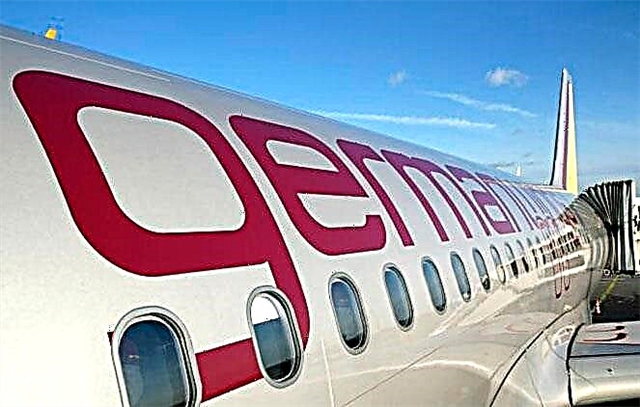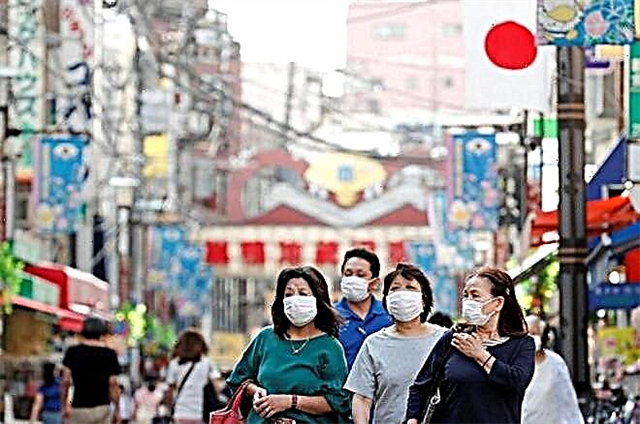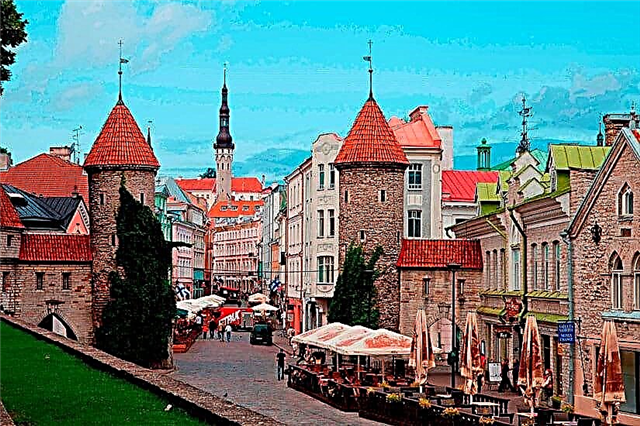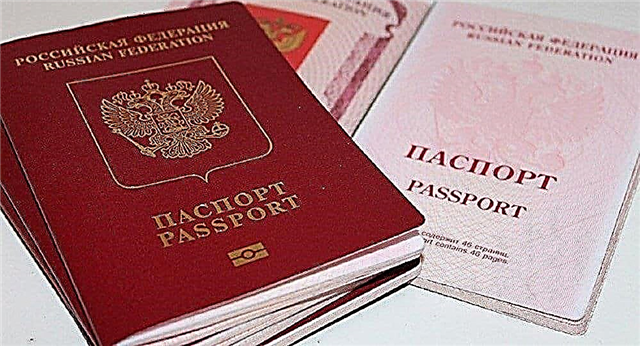Hong Kong is often spoken of around the world as China's huge offshore business center. This is partly true, but not only this is interesting for the group of 260 islands off the southern coast of the PRC. Here Eastern and Western cultural traditions meet and are closely intertwined with each other, which creates a completely unique flavor.
History of Hong Kong
Until 1860, a group of islands off the southern coast of China was part of

Celestial Empire. During the reign of the Qing dynasty, the famous Second Opium War took place, one of the results of which in1860 g. was the transfer of the Kolulunsky Peninsula south of Boundary Street, as well as the Stonecutter Islands in the possession of Great Britain. The transfer is sealed by the Beijing Treaty. Somewhat later, in 1898, Great Britain leased the northern part of the Kowloon Peninsula and Lantau Island from China, giving the combined site the name New Territories.

For your information! The issue of returning the colony back to the PRC caused many diplomatic disputes, but in the end it was agreed and formalized by the Joint Sino-British Declaration, signed in Penkin in 1984. In its execution, Hong Kong was able to join the PRC back in 1997.
Hong Kong (China) and its British occupation
Britain declared the colony a duty-free export and import zone, making it an important trading base in Southeast Asia. In 1910 g. completed the construction of a branch line connecting Guangzhou (formerly Canton) with Kowloon. At that time, teaching in schools was conducted only according to the British system.
In December 1941 year... Japan attacked Hong Kong. 3 weeks of battles ended with the defeat of the combined forces of Great Britain and Canada. The most terrible result of the Japanese occupation is the destruction of the local population, whose number from 1.6 million people in 1940 decreased up to 600 thousand people in 1946. It was possible to get rid of the Japanese occupation only in August 1945.
The restoration of the population took place due to migration from the mainland during the civil war that broke out in the PRC after the end of World War II. The outflow only intensified after the emergence of the PRC in 1949. China's trade with the continent stopped after the UN embargo was imposed due to the PRC's entry into the Korean War (1950-1953 biennium.). Industrial and economic growth continued until 1967, when an uprising broke out against the colonial government.

Note! Since 1974, the dominance of the textile orientation of the economy has changed to the financial and banking, when Guangdong province was declared a special economic zone of Shenzhen. According to the Sino-British Declaration, Hong Kong, after joining the PRC in 1997, will maintain a high degree of autonomy for another 50 years.
When Hong Kong was returned to China
You May Also Like
The British colony ceased to exist on July 1, 1997, gaining independence from Great Britain. According to the agreement reached, China began to implement a unique national policy: one country - two systems that will last until 2047 There are still two official languages here - Chinese and English.

An important consequence of the transition of Hong Kong to the PRC is an increase in the flow of immigrants from the mainland (up to 45 thousand Chinese per year). The Hong Kongers who previously lived on the mainland did the same.
For your information!The population density is 7.4 million people on the territory of 1106 km², that is, 6732.56 people / km² (for comparison, the density in the PRC is 146.3 people / km²).
General information about the city: what is Hong Kong
262 islands located in the South China Sea make up a separate Chinese administrative region - Hong Kong. The island is the second largest in this group (the first is Lantau), but the first in terms of population has the same name. The name in translation means "fragrant harbor", because there was once a trade in incense and fragrant wood.
Important! Victoria Harbor separates Hong Kong Island from the Kowloon Peninsula and is one of the world's deepest seaports.

Most of the island of Hong Kong has not yet been developed, as it is covered with hills and steep mountains with a large difference in elevation. Occupied only 25% of the total area, and 40% of this part is already a nature reserve and a recreation area. The urban area on the mainland is located on one side of the Pearl River Delta. From the north, the border adjoins the city of Shenzhen in Guangdong province.
Hong Kong is where it is located, in which country
Hong Kong has been part of China since 1997. The official transfer secured the jurisdiction of the Chinese government over the offshore zone, retaining some legislative sovereignty over it until 2047. In the future, it will treat China in the same way, but the legislation will change.
Is Hong Kong the capital of China
No, it's not. The capital of the modern People's Republic of China is Beijing (since 1949). Hong Kong is an administrative region with a special economic status that is directly related to the PRC.
Where is Hong Kong on the map
You May Also Like
In fact, it is a city-state. To the question: Hong Kong is the capital of which country, the correct answer is none, since it itself is only a part of the PRC. Likewise, to the questions: "Hong Kong is China or not" or "Hong Kong - which country", there is only one answer - China. That is why any of its points has an address starting with "PRC, Hong Kong, ...". The mainland south of the Chinese city of Shenzhen is the Kowloon Peninsula.
Note! The largest island is Hong Kong. The rest are called New Territories and Outlying Islands: Lantau, Chong-Chau, Peng-Chau, etc.
Hong Kong in Chinese: Another name for Hong Kong
In Cantonese (one of the dialects of the Chinese language), the name of the city sounds like Hyeongkong takpit hanchinkhyoi. In Mandarin (the official language of the PRC) - Xianggang tebe xingzhengqui. A common, often found in English-language sources, the abbreviated name is Xianggang.
Hong Kong Square
The total geographic area is 1106.4 km². Of these, Hong Kong Island accounts for 80.7 km², Kowloon - 46.9 km², and the rest of the smaller islands and New Territories - 978.8 km².
Administrative division
The territory is divided into 18 administrative districts. Each of them has a district assembly that has the right to advise the Hong Kong government on issues of local government, culture, and the environment. The Department of Internal Affairs coordinates interaction between the population and regional authorities.

Although you can find individual villages and even several towns with their own names on the map, none of these entities actually has an administrative status. All of them are only part of their area. All borders are fixed at the legislative level.
Population: how many residents are in Hong Kong
The rapid population growth due to labor immigration occurred in the 90s. XX century In 2021, the population was 7 404 207 people... About 95% of the population is ethnic Chinese, with the majority being Cantonese.
Other different ethnic groups account for only 5% of the population, but they play a very prominent role in the life of Hong Kong. There are many Pakistanis, Indians and Nepalese here. After the Vietnam War, many Vietnamese moved here on a permanent basis.
Note! Filipinos (about 140 thousand people) are hired to do housework. In the highest-paid financial and commercial sector, Americans, Europeans, Japanese, Koreans and Canadians work for the most part with the Chinese.
Government and politics
The Basic Law, which is effectively a constitution, allows local authorities to maintain independence in all matters, with the exception of foreign policy and defense. During the colony, the Queen of England appointed a governor. His political functions now belong to the Chief Minister of the Hong Kong Administration, elected by a committee of 800 representatives of the business elite (corporate presidents). The rest of the officials are partly appointed by the Chief Minister and partly elected.
For your information!Most of the government buildings are concentrated in an area called Central, located on Hong Kong Island near the historic city of Victoria (where the first British settlements were located).
What language is spoken in Hong Kong
The main language of communication in most parts of the world is Cantonese. English is the second official language. Following the city streets, you can see the inscriptions in hieroglyphs everywhere, duplicated in English. In third place is the official language of mainland China, Mandarin. Russian is a language spoken for the most part by employees in the tourism sector, as well as by enterprises with economic ties with the Russian Federation.
Economy
The basis of the region's economy is a free market based on low taxation and a policy of non-interference of the state in economic issues. Hong Kong is an offshore as well as an international port that is free of import tax and value added tax. The total tax rate is 22.8%.

Only alcoholic beverages, mineral oils, tobacco and methyl alcohol of any production are subject to excise duty. International finance and the largest trade enterprises are concentrated here. In terms of the number of headquarters, the existing position is the first in the Asia-Pacific region, while among all cities in China it remains the richest for many years in a row.
Transport
The public transport system is well developed, many of the townspeople have private cars or scooters. There is a rail transport system: metro, suburban and city electric trains. The population uses buses and ferries. In the most densely populated areas, double-decker buses and funiculars run.

Important! From Macau, transport links pass over a 55 km steel bridge.
The culture
The cultural traditions of the East and West are intertwined here. This is reflected in architecture, education, economics and other spheres of people's lives. Here on one street you can see a European-style pharmacy, and next to it is a stall with traditional Chinese medicines. If you wish, you can easily visit a Catholic or Buddhist temple, go to the cinema or McDonald's restaurant. Although the UK has officially left the region, the whole structure largely repeats the British model.
Note! The film industry is very developed here, glorifying the martial arts. Local immigrants B. Lee, D. Chan, as well as director D. Wu.
Education
Higher education is built on a British or American form of study, for example, at the University of Hong Kong. There are 9 state universities in total, but you can study at a private university. Lingnan University teaches in the British Seven Liberal Arts System. The oldest educational institution is Li Ying College (1075 BC). Primary education in sparsely populated areas is represented by 20 schools.
Climate
The subtropical monsoon climate is characterized by a dry season with low temperatures from December to March and a rainy season from April to November. When the prevailing northerly wind is established, the temperature can drop dramatically.
For your information! Due to the large length of the sea border, the temperature regime is rather mild.

It is extremely rare that the heat rises above 33 ° C. However, the humidity is almost always high, and in the rainy season it is 100%. The amount of precipitation falling at this time is up to 500 mm per month. Not every year, but typhoons do happen. The average temperature in January is 16 ° С, and in July 28 ° С.
One of the most interesting stories is the formation of the British colony of Hong Kong and its transformation into one of the modern world centers of business and finance. The Chinese region will retain its special position until 2047.











